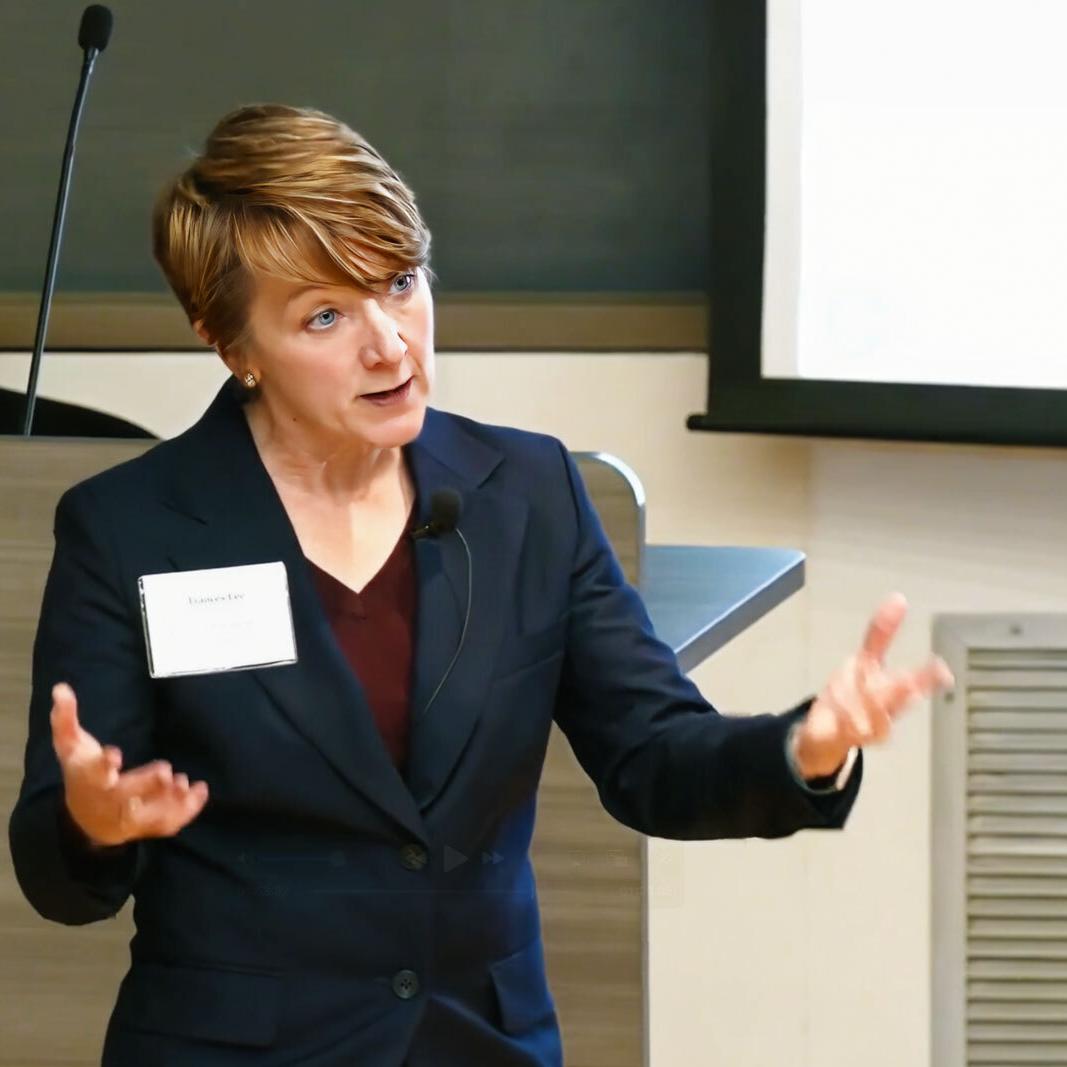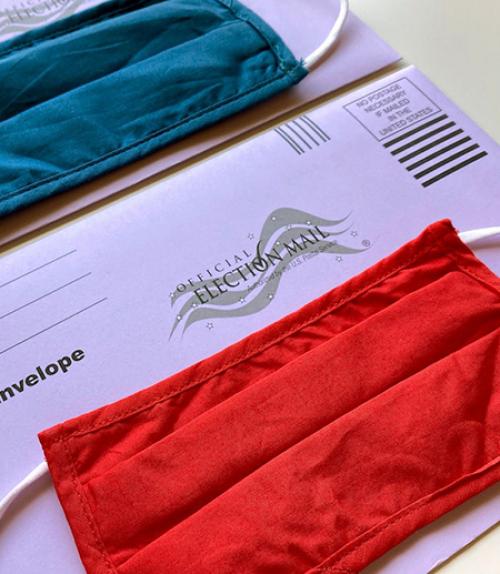Days before the Nov. 3 presidential election, a majority of Americans – and two-thirds of younger adults – are worried about the nation’s future, according to a national poll designed by Cornell undergraduates.
Surveying a nationally representative sample of more than 1,100 adults, students in the class “Taking America’s Pulse” found that former vice president Joe Biden held a strong national-level lead among likely voters over President Donald Trump, consistent with other widely reported polls.
But a question written by Sabrina Martin ’23, an information science major from Palo Alto, California, tapped underlying anxiety among likely voters, said Peter Enns, associate professor of government in the College of Arts and Sciences, and Jonathon Schuldt, associate professor of communication in the College of Agriculture and Life Sciences, who co-teach the class.
Asked if they felt hopeful or fearful about America’s future, 53.5% of survey respondents said they felt fearful, compared to 46.5% who were hopeful. Concern was highest – 67% – among those aged 18-24.
“We thought it was stunning that, as the election approaches, more than half of respondents indicated they were fearful for America’s future,” Enns and Schuldt said. “We also noticed a striking pattern by age, with younger respondents appearing more fearful.”
NORC at the University of Chicago, a leading survey research firm, conducted the poll for the class over two weeks in October, using its AmeriSpeak Panel. The probability-based survey represents the scientific “gold standard” for accurately capturing national public opinion, the professors and students said, producing a margin of error of plus or minus 4 percentage points.
Each of the roughly 50 students in “Taking America’s Pulse” was responsible for writing a survey question based on their research interests. Their topics were wide-ranging, from the election to self-driving cars to expected cause of death.
“We’re actually writing these survey questions and sending them out to real people,” said Anna Sattler ’20, a government major from Cedarburg, Wisconsin. “And now we’ve got cold data back that we can use and synthesize to make more clear to the general public. It’s a really unique opportunity.”
Enns and Schuldt are teaching the class for the fourth time since 2014, and remotely for the first time due to the pandemic. They review the theory and methods behind survey research, then help students design and conduct a real survey, analyze the results and submit op-eds about their findings.
“There’s such a focus on data literacy now,” Schuldt said. “We want students to be informed, critical consumers when they encounter headlines based on survey data, especially in an election season.”
The class may be the only one of its kind to put undergraduates in charge of a national-level, probability-based public opinion survey, which can be expensive to conduct, costing as much as $1,000 per question.
This year, the class was supported by an Office of Engagement Initiatives grant and partnered with two nonprofits – the Environmental Defense Fund and The Marshall Project – that will use some of the survey results to help guide policy initiatives, messaging or journalism.
“This was a fantastic opportunity for us to work with the class and to be able to get quick, relevant insights into how hundreds of respondents feel about the effects of the coronavirus on the justice system and the various proposals meant to deal with it,” said Tom Meagher, senior editor at The Marshall Project, a news organization focused on criminal justice. “The insight was all too rare and invaluable for our reporting and the stories we tell for our audience.”
Working with Meagher and Staff Writer Nicole Lewis, Sattler crafted a question seeking Americans’ views on whether opioid addiction is a crime, an illness or neither. The results surprised her: 68% of Americans consider it an illness – a sharp increase from levels reported in a 2018 poll sponsored by Politico and the Harvard School of Public Health.
Faith Fisher ’22, a double-major in government and Spanish from Potomac, Maryland, found the nation roughly split on whether the U.S. Supreme Court is politically partisan or neutral. She plans to analyze differences by party affiliation and other demographic factors.
“There’s so many different ways to analyze it beyond the one result we got,” she said. “It really is powerful being able to gauge people’s attitudes and beliefs.”
The students said most people don’t appreciate how much work goes into phrasing a seemingly simple survey question to make it clear and unbiased. Hannah Urken ’21, a communication major from Westchester, New York, estimated she revised her question 15 times, including replacing references to “prisoners” or “inmates” – which might conjure negative stereotypes – with “incarcerated individuals.”
Her findings also were unexpected: About 70% of respondents said incarcerated individuals should get the same medical care for COVID-19 at local hospitals, if needed, as the general public.
“I think that has policy implications for people fighting for criminal justice reform,” Urken said.
Alana Coleman ’22, a communication major from Brooklyn, New York, explored an often-taboo topic. She asked if people thought their cause of death would be sudden accident or injury (5%); a health issue or illness (38%); natural causes or old age (54%); or suicide (1%).
“There’s a lot of skepticism towards polls,” Coleman said, “but after working on one, I see the validity in them.”
Students’ outside-the-box questions can lead to insights professional pollsters might miss, Enns and Schuldt said. In the class’s 2016 poll, a question about who voters considered more truthful, Hillary Clinton or Donald Trump, revealed “hidden” Trump supporters who hadn’t declared their preference, and was highly predictive of the election.
“We’ve changed how we write survey questions because of this class, because we’ve seen the insights that emerge from asking atypical questions,” said Enns, who’s also director of Cornell’s Roper Center for Public Opinion Research, where the students’ survey data has been archived.
The students are just beginning to pick apart their survey data using statistical software called Stata. By the end of the semester they’ll write and submit op-eds that in the past have been published in hometown and major media outlets, reporting America’s pulse on issues spanning politics, business and sports.
“I’m really eager to look at the data,” Sattler said, “and to figure out what exactly the public thinks.”





